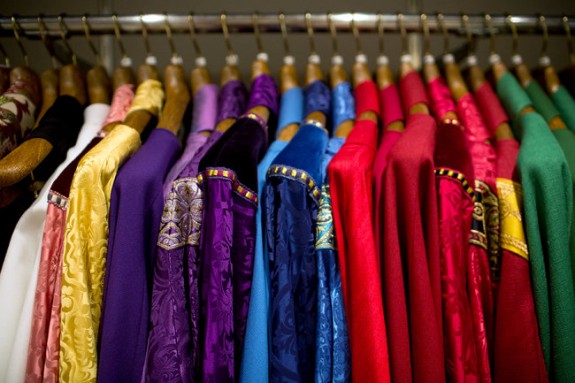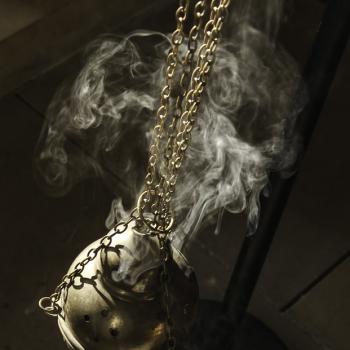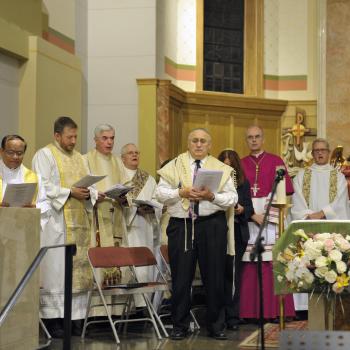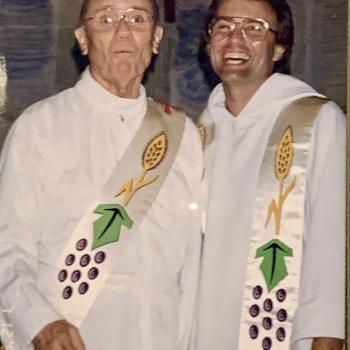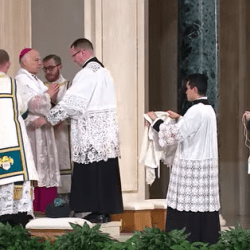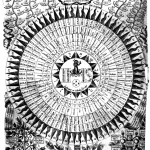The New York Times this weekend offered something surprising, a profile of the popular vestment manufacturer CM Almy, which is creating new fashions for female clergy:
Stephen Fendler, president of CM Almy, shows off a rack of samples from his brand-new women’s collection, pointing out a piece he’s particularly proud of: a black blouse in a stretchy jersey knit.
But Mr. Fendler’s collections won’t be seen on the runways anytime soon. CM Almy says it is the largest, and one of the oldest, American producers of clerical clothing, and its models are hitting the pulpit instead of the catwalk. Their designers create garments for priests, ministers and bishops mainly within the Episcopal, Lutheran and Roman Catholic churches — from everyday plain shirts and white collars, to the more elaborate and colorful ceremonial chasubles.
“We have seasons, and items go in and out of style just like the fashion world,” Mr. Fendler said. But “our style changes are driven by evolutions in holy ceremonies. Nobody would call us the most fashion-forward company in the marketplace.”
The family-run company has been making clerical clothing and supplies since 1892, when an uncle of Mr. Fendler’s grandfather started the business near a seminary in Chelsea. Today, CM Almy is based in Armonk, N.Y., with a showroom in Greenwich, Conn. Mr. Fendler’s brother and the company’s vice president, Michael Fendler, runs the manufacturing end of the business in Maine. Among their clients are Cardinal Timothy M. Dolan and the priests at St. Patrick’s Cathedral.
Clerical designs are bound to tradition and slow to change. But this fall for the first time, Stephen Fendler is revamping CM Almy’s women’s line of everyday clothing to keep up with increased demand. In 2012, more than 20 percent of clergy were women, according to the Bureau of Labor Statistics, compared with 14 percent 10 years ago. And Mr. Fendler estimates that about half the graduates from Episcopal seminaries are women.
For a long time, he said, Almy had offered casual, everyday clothing for female priests and ministers, but the shirts were man-tailored and made from a stiff cotton material. Over the years, he began to hear from women who wanted more options.
“We want to represent the authority of a church, but we also want to look and feel like women,” said the Rev. Anisa Cottrell Willis, a priest in the Episcopal Diocese in Lexington, Ky. Mrs. Cottrell Willis advised CM Almy during the design process. “Most women don’t like the way they look in the boxy, men’s button-down shirts.” She said. “The job is dominated by men, but that doesn’t mean we have to look like them.”

